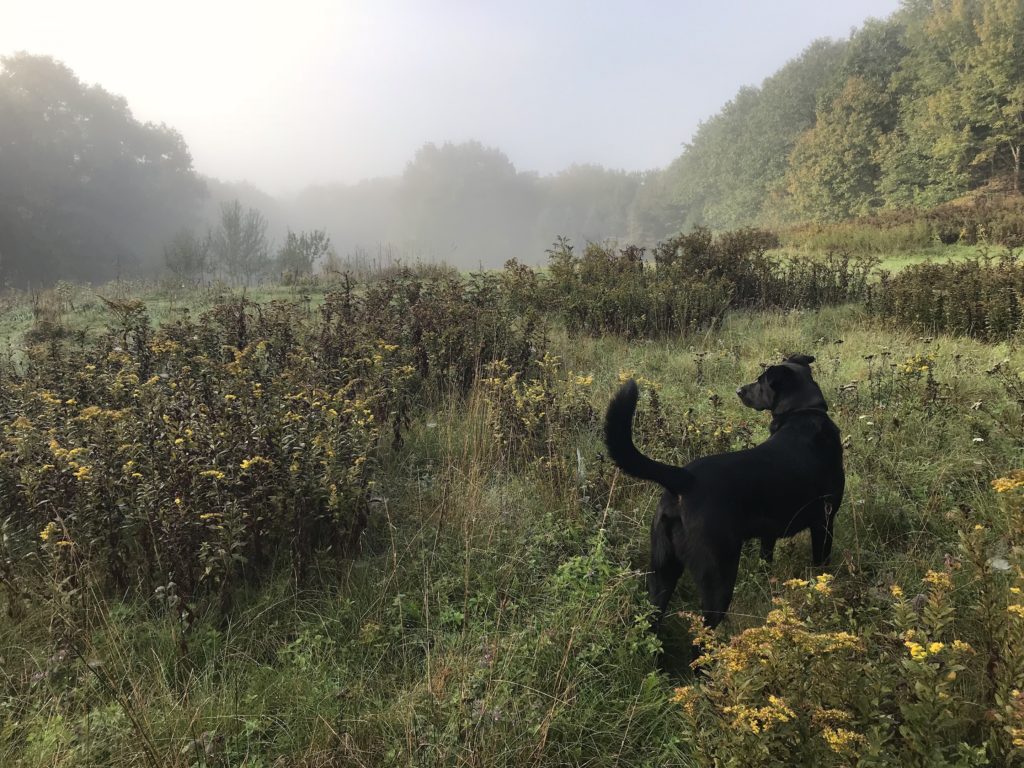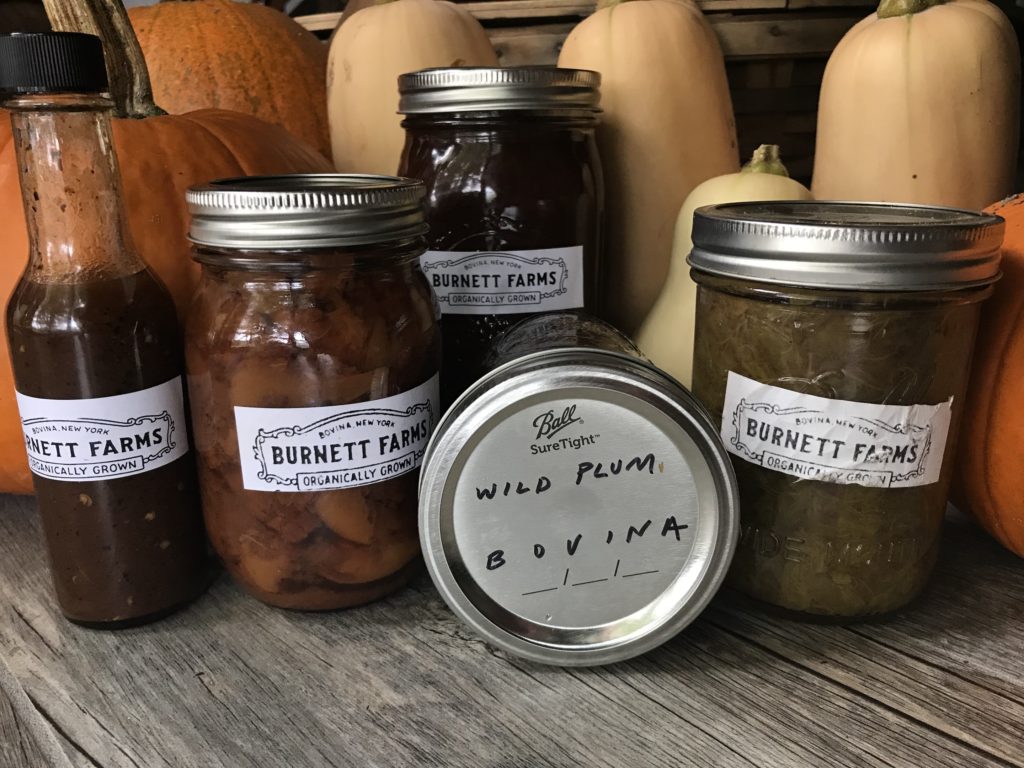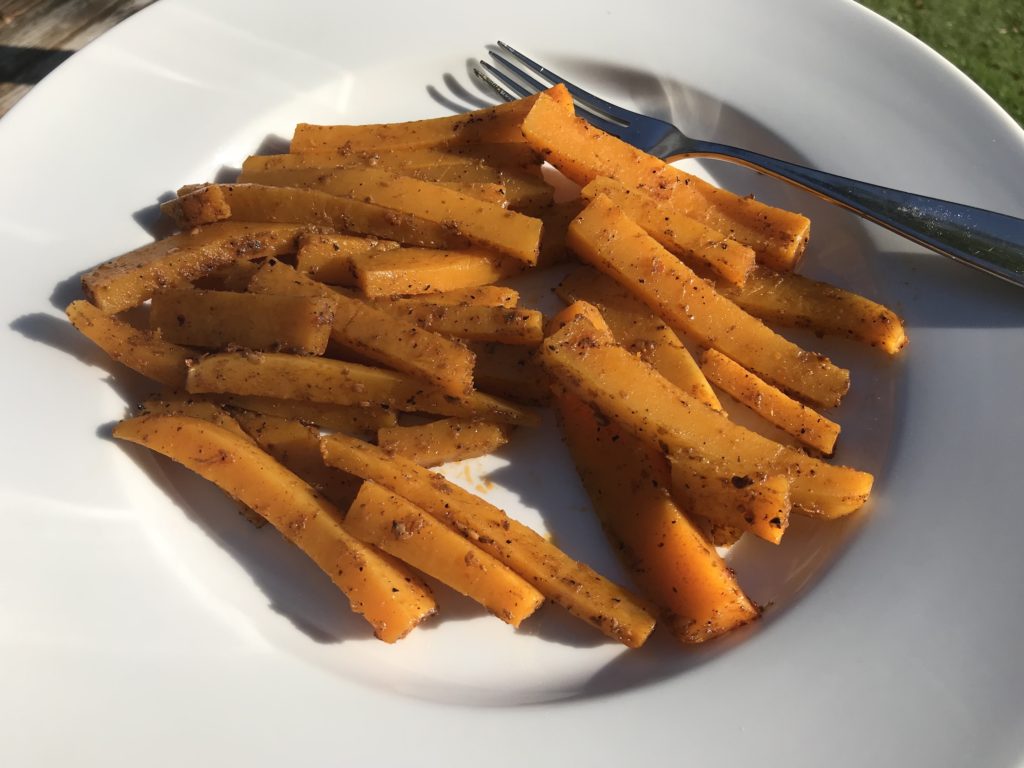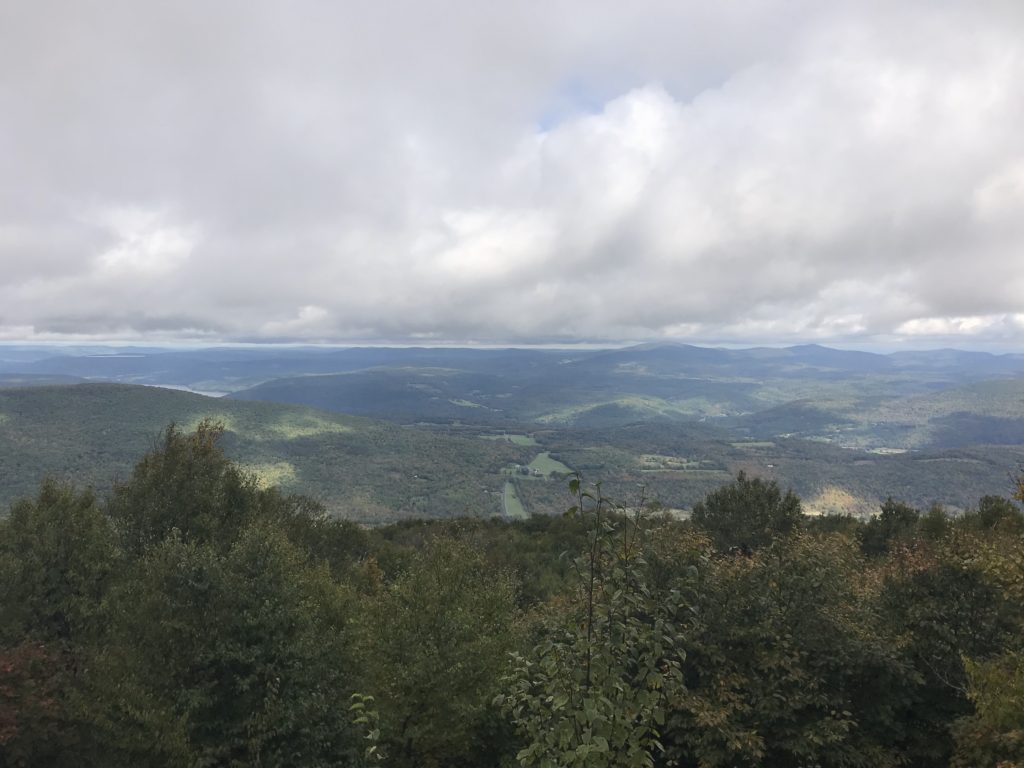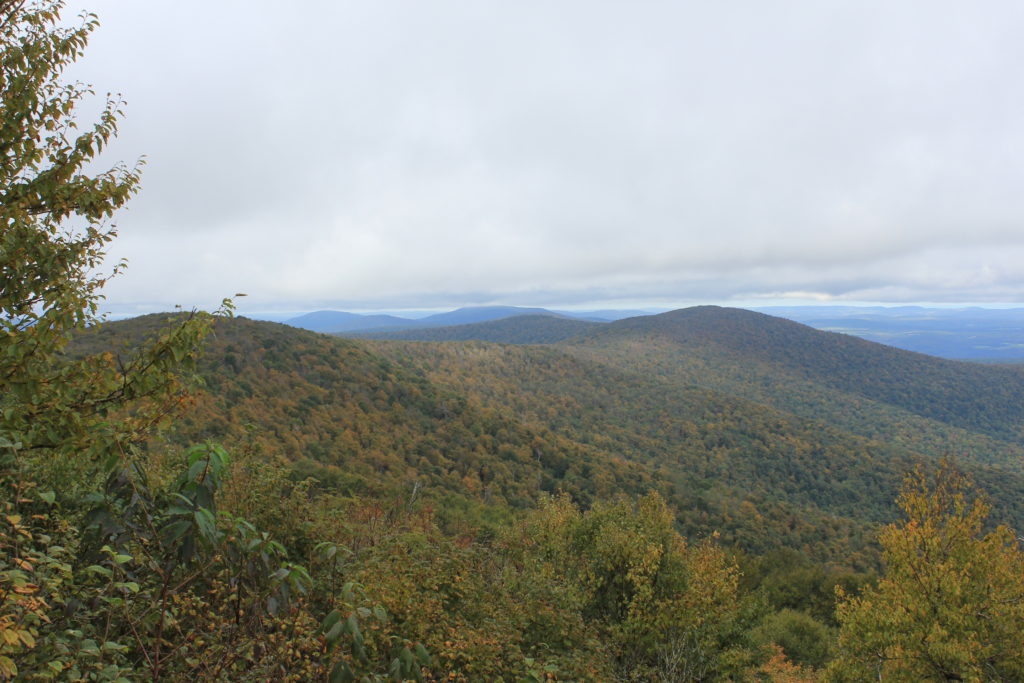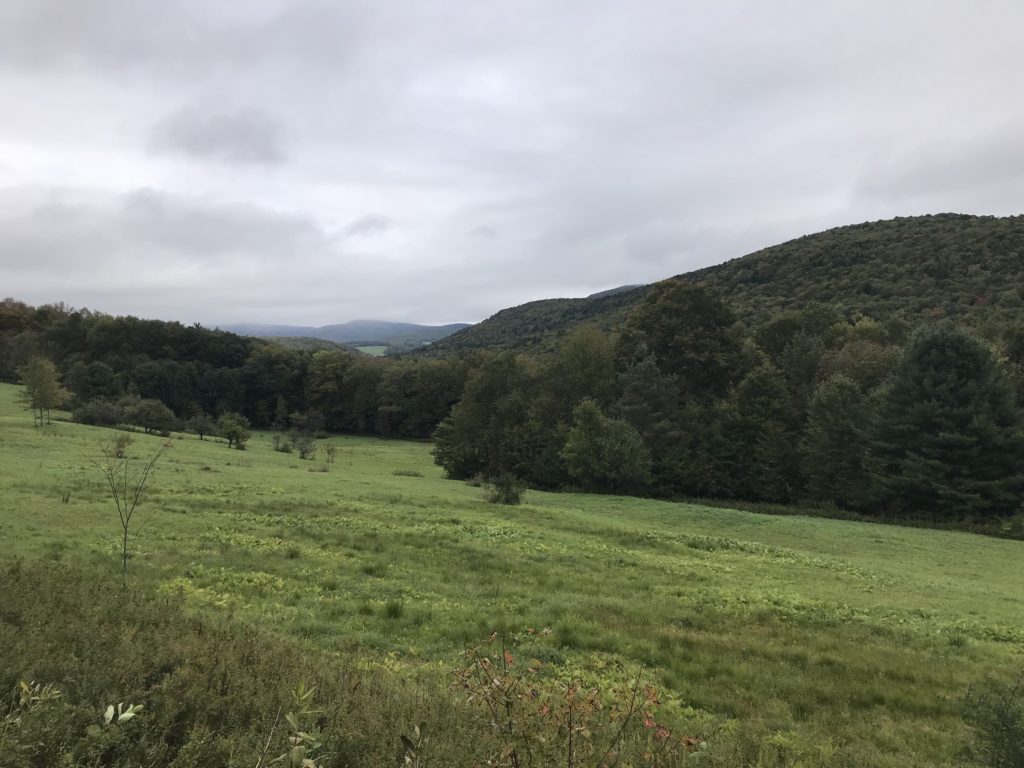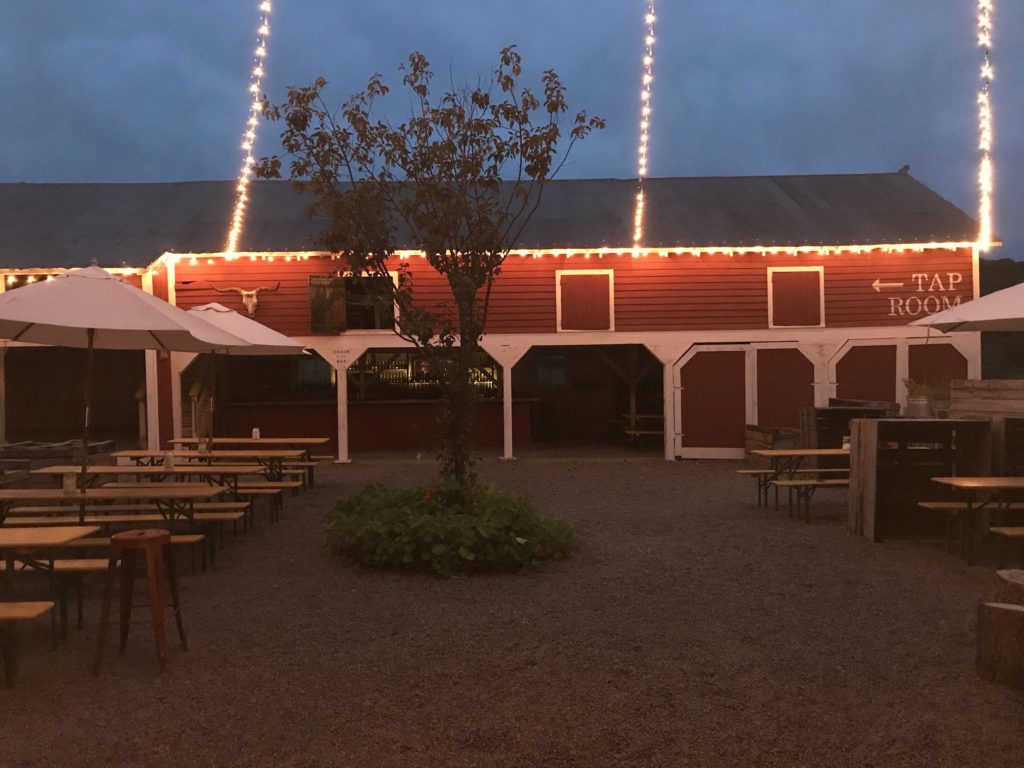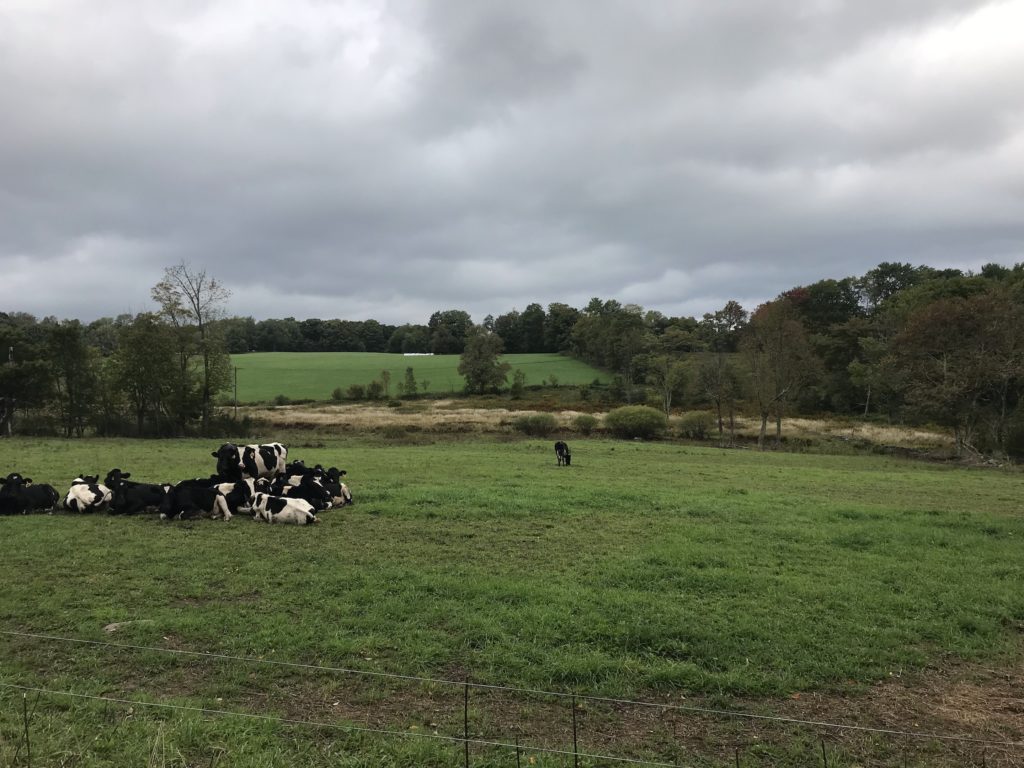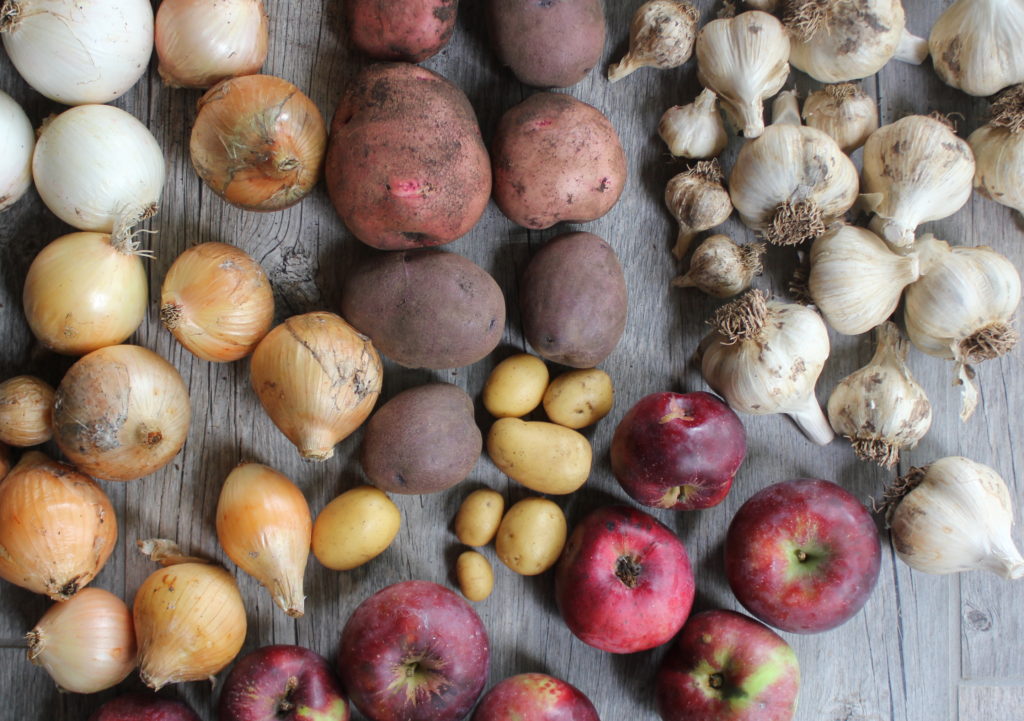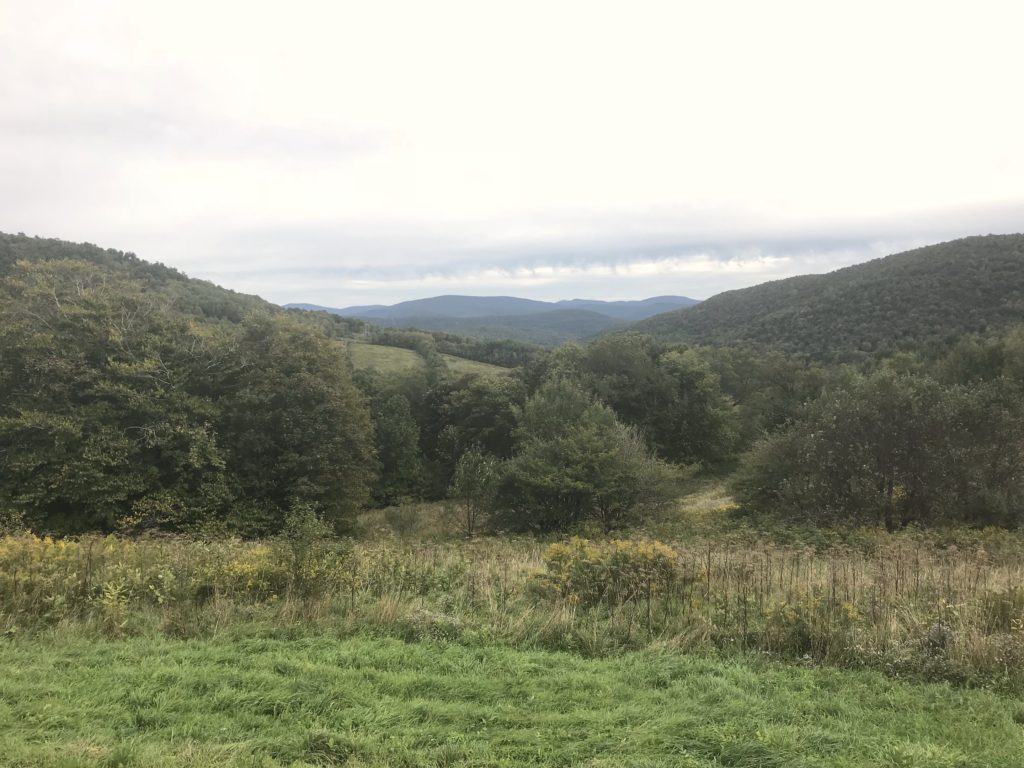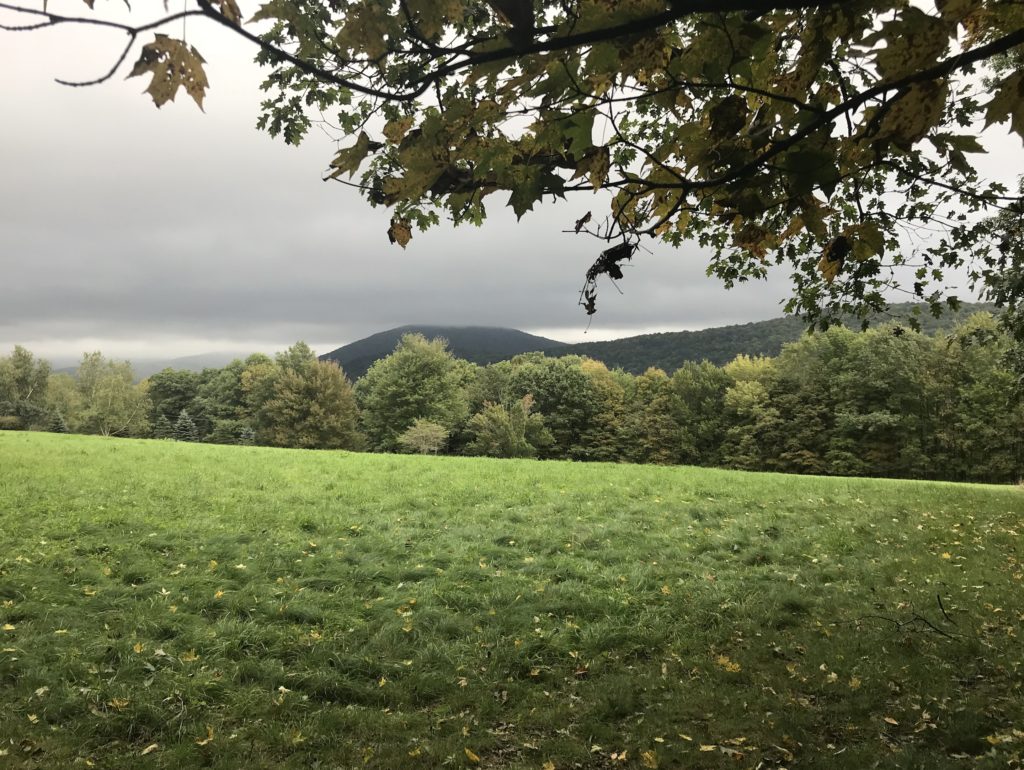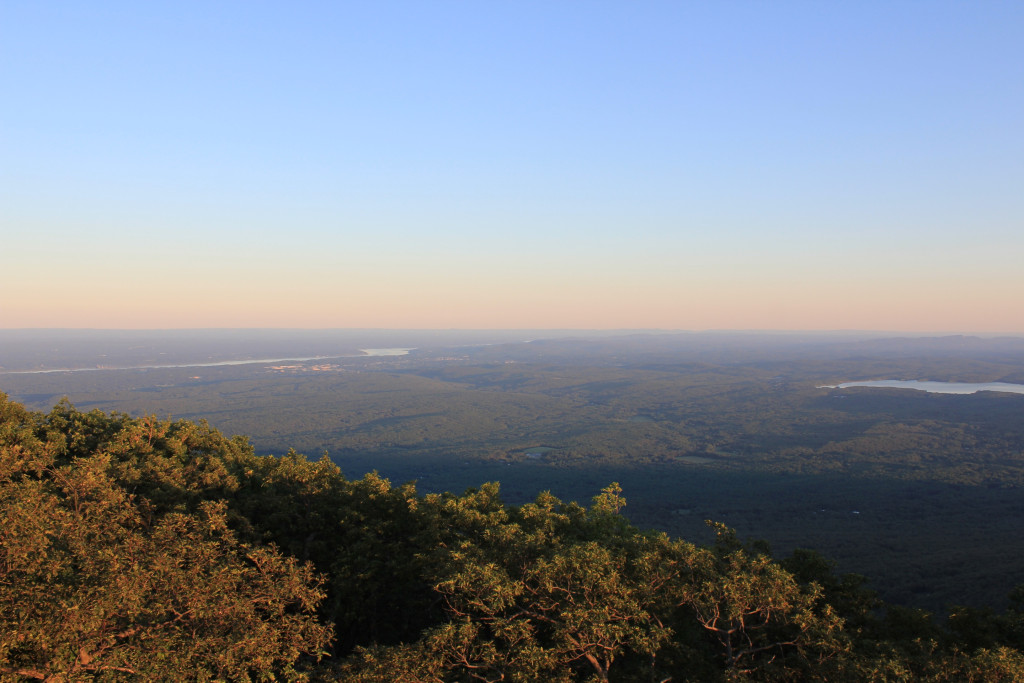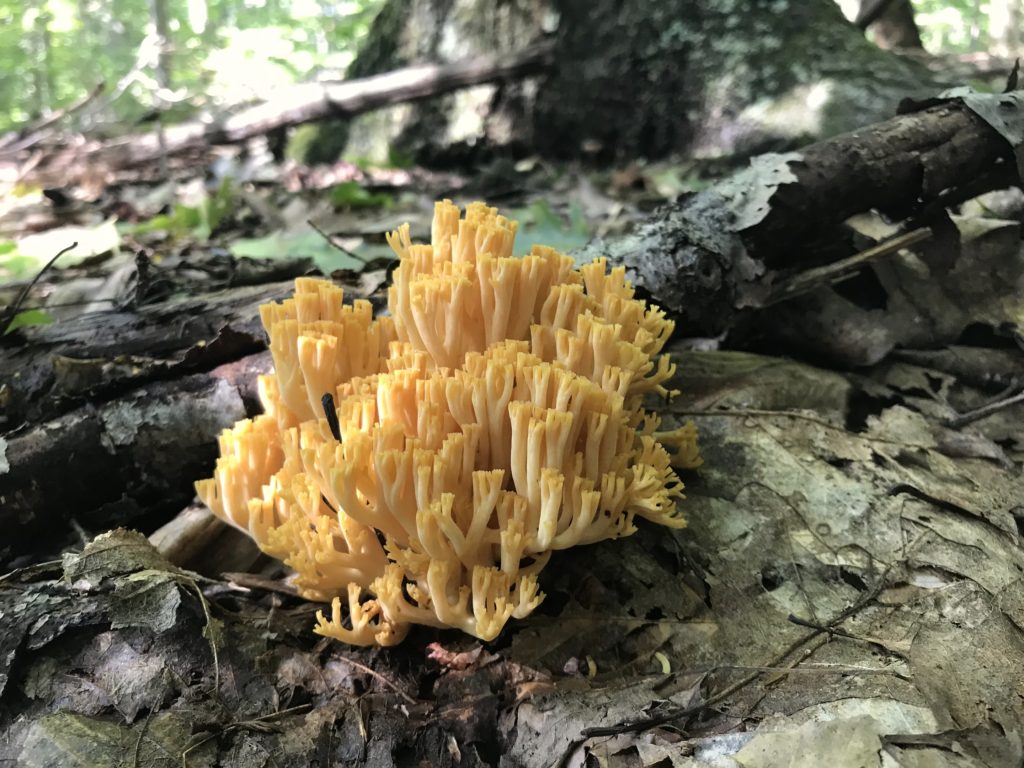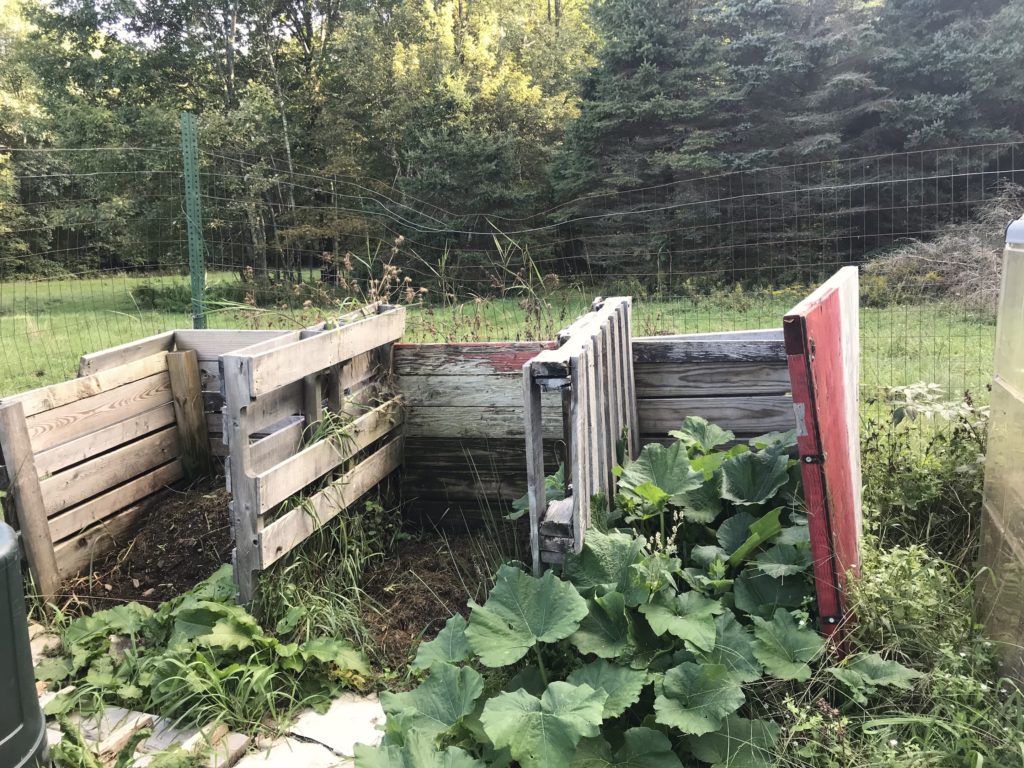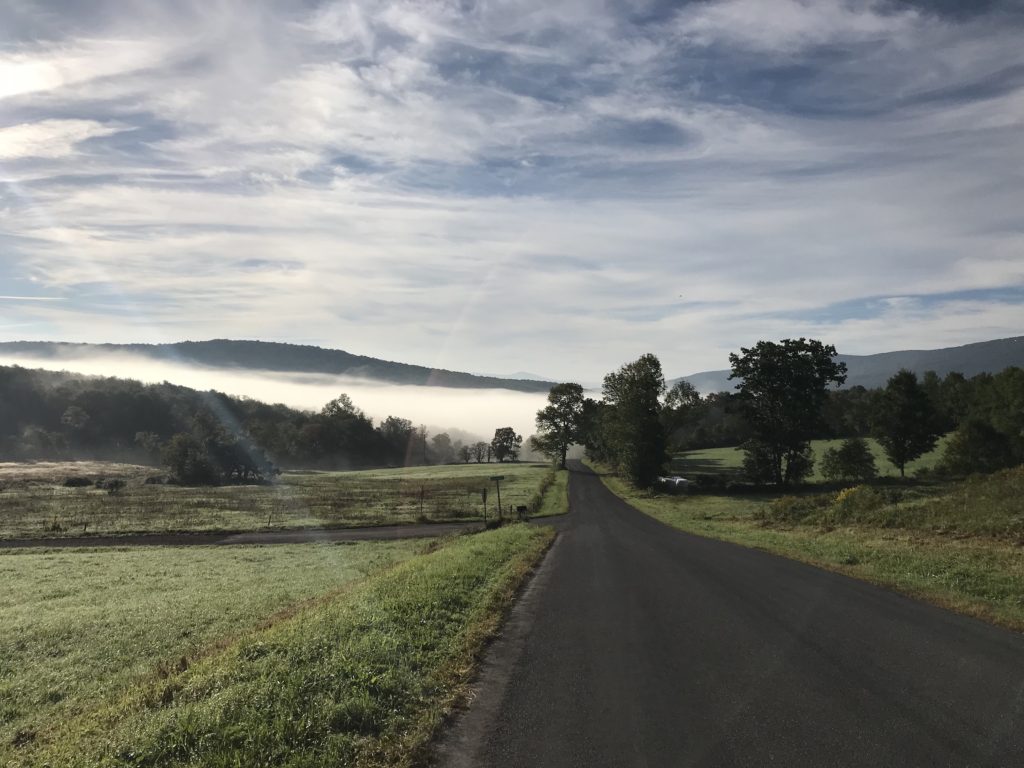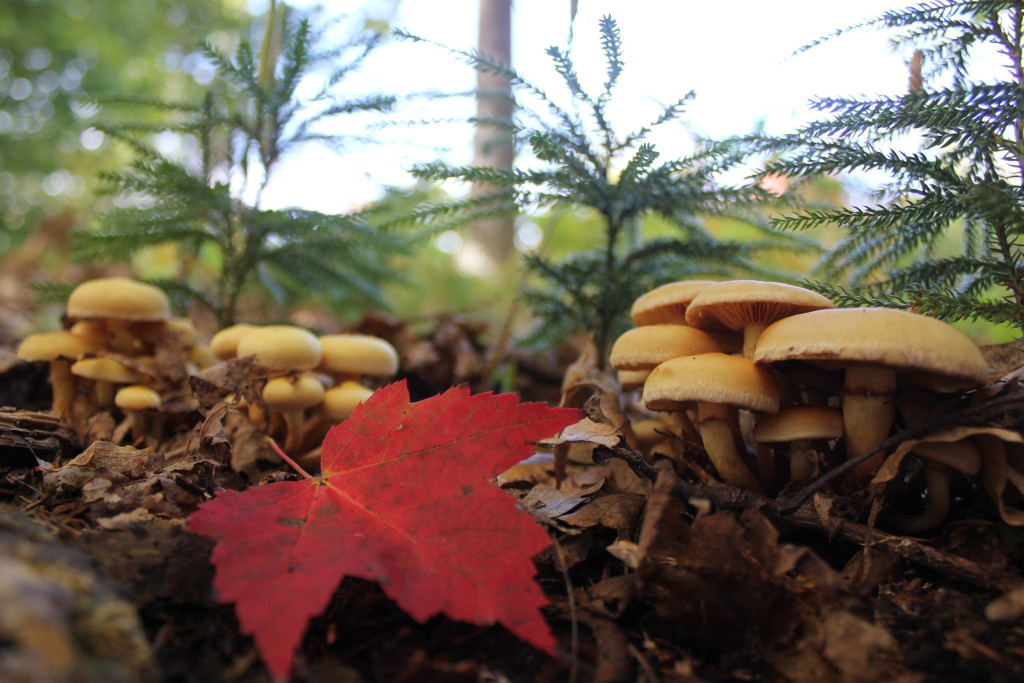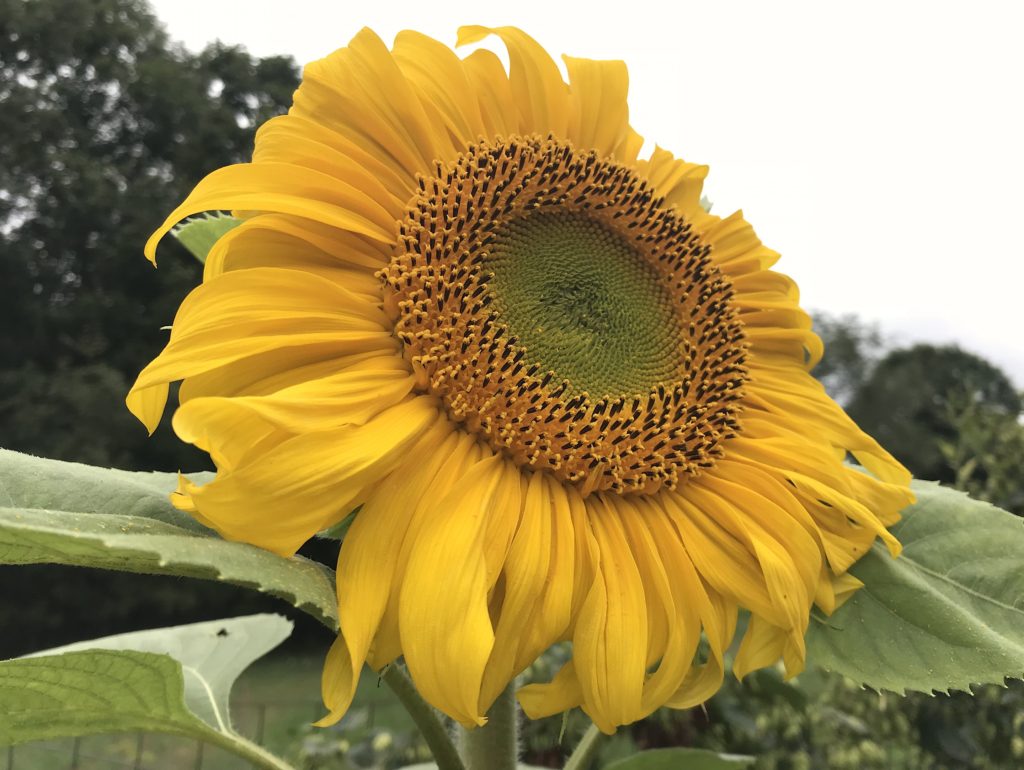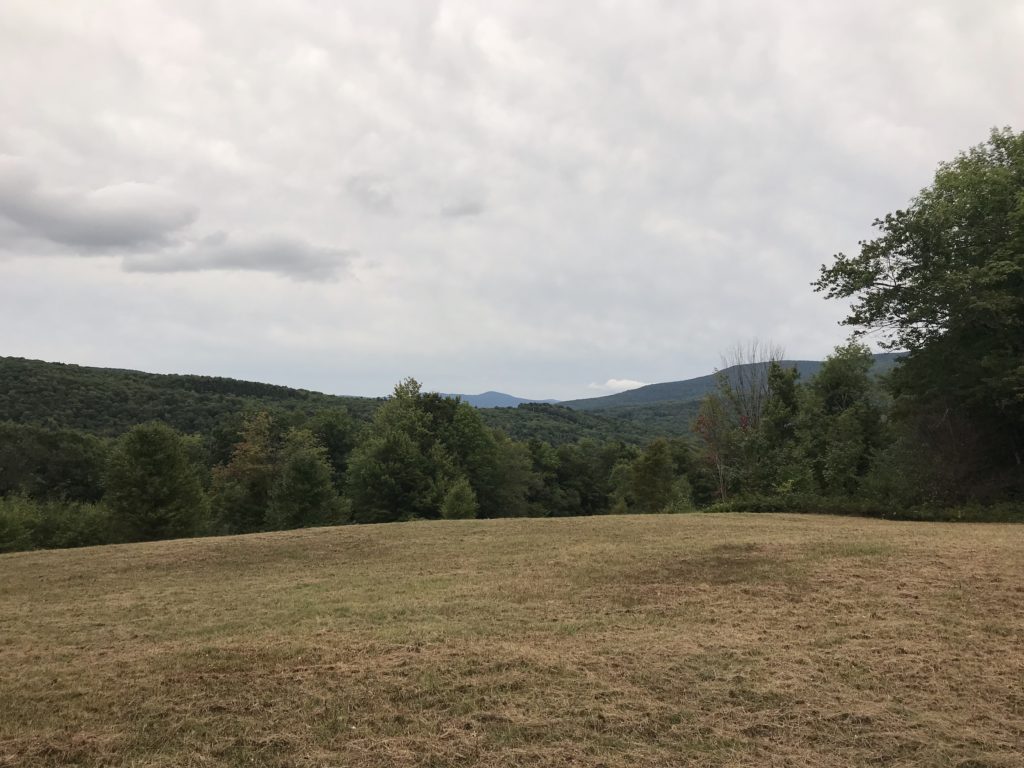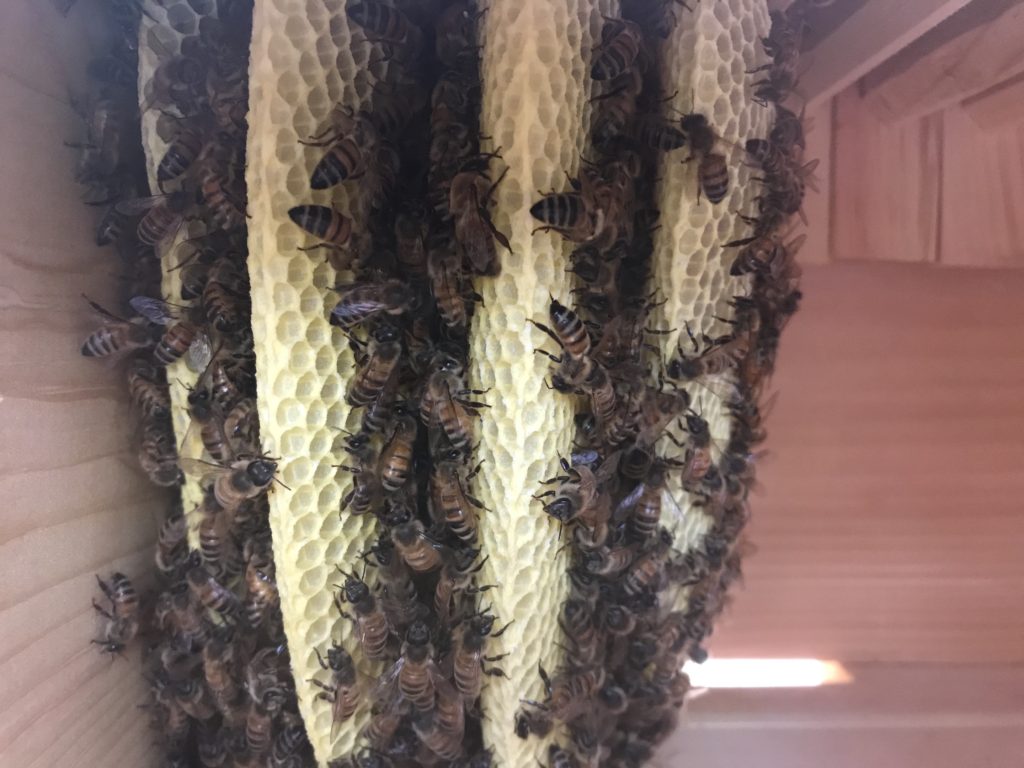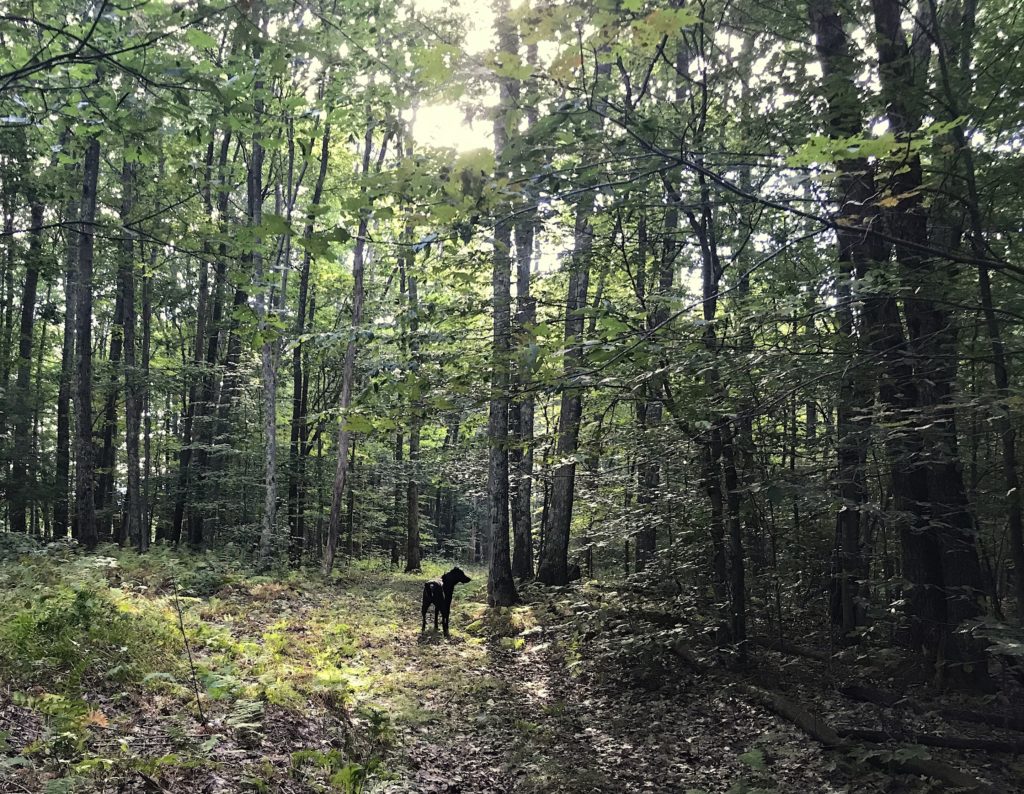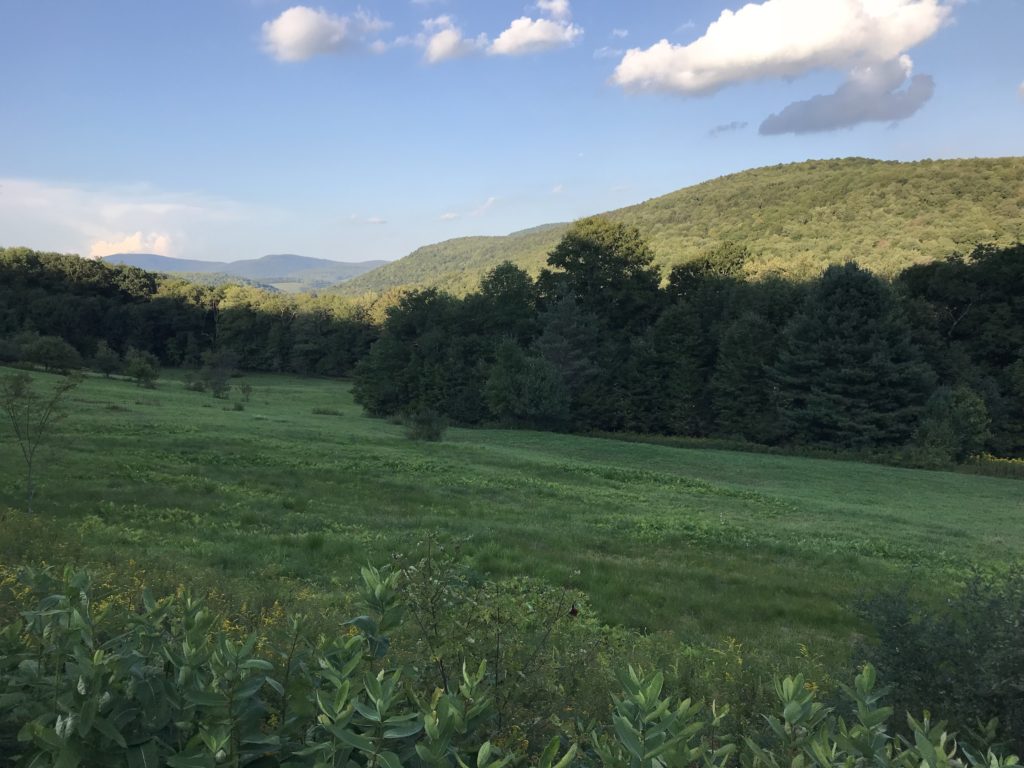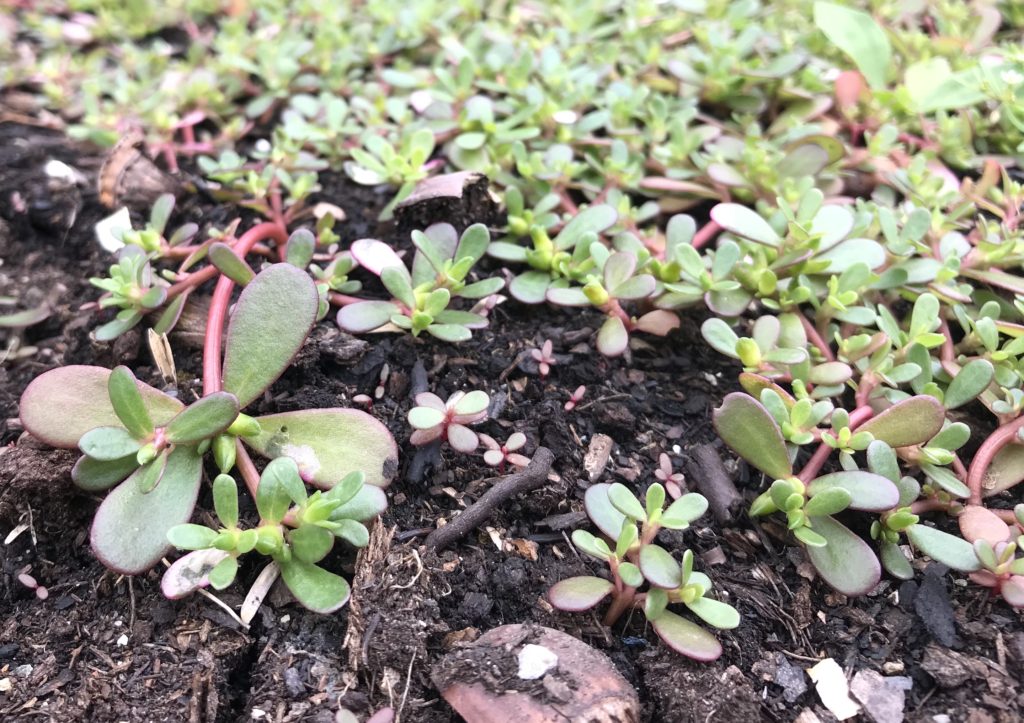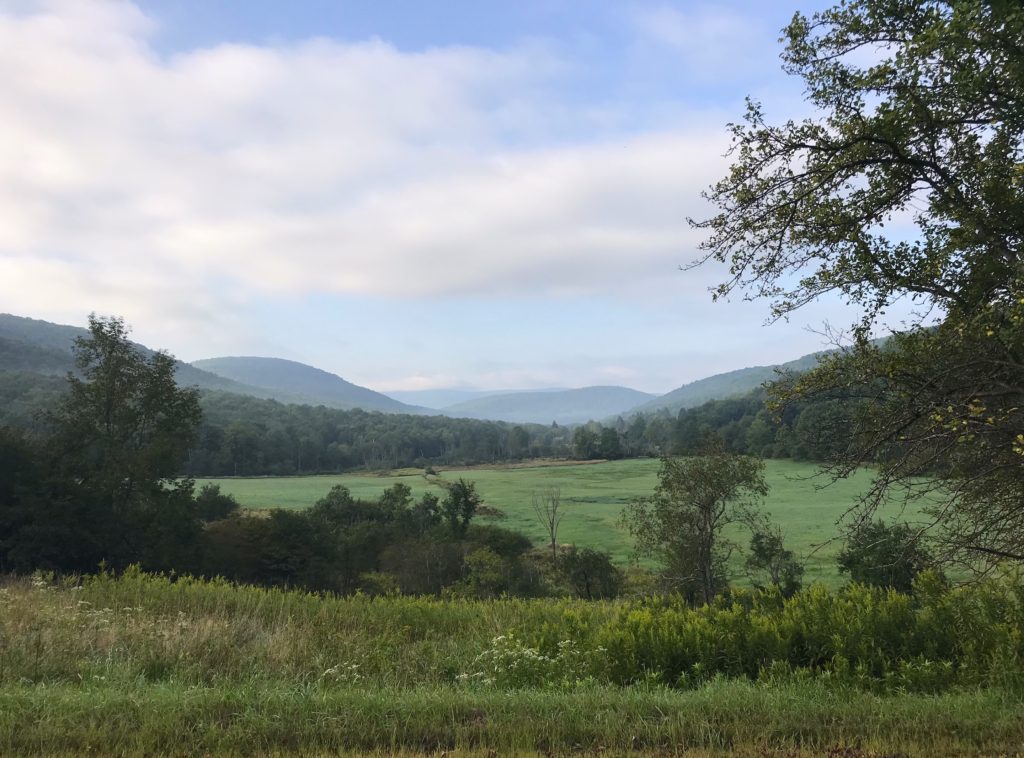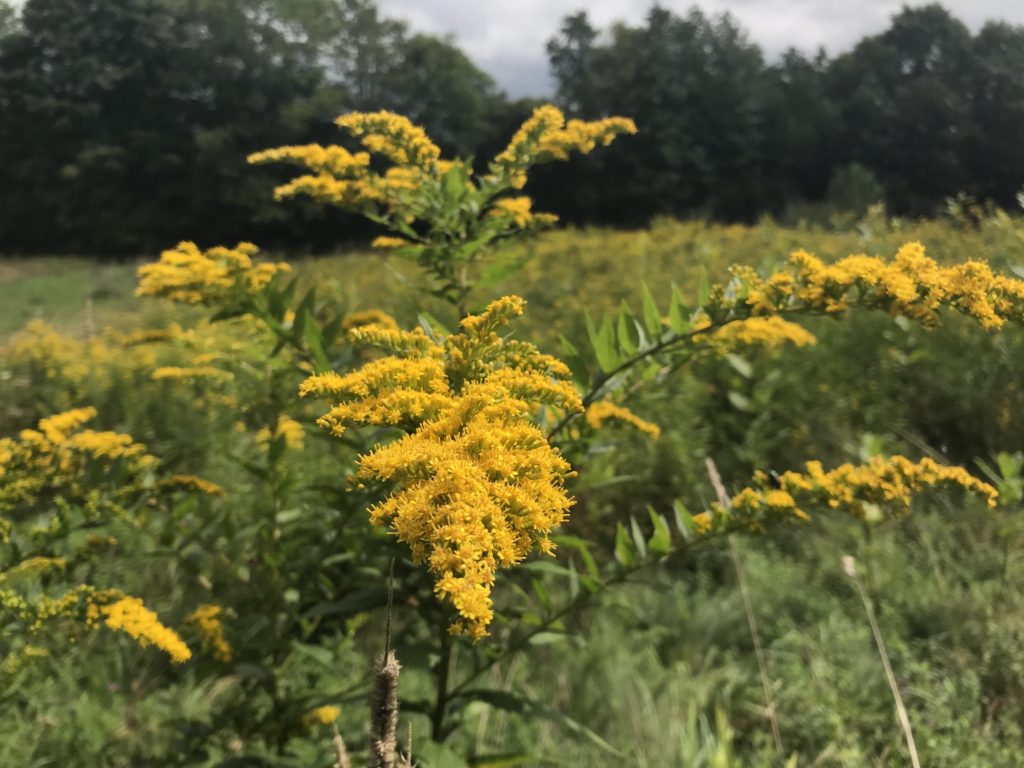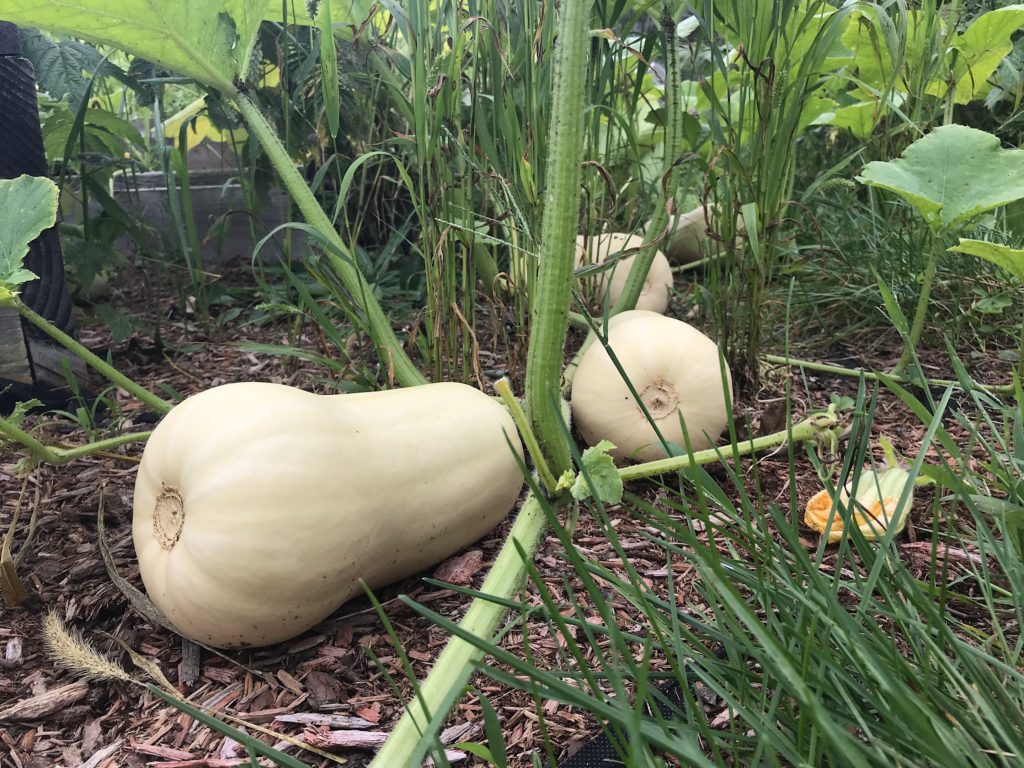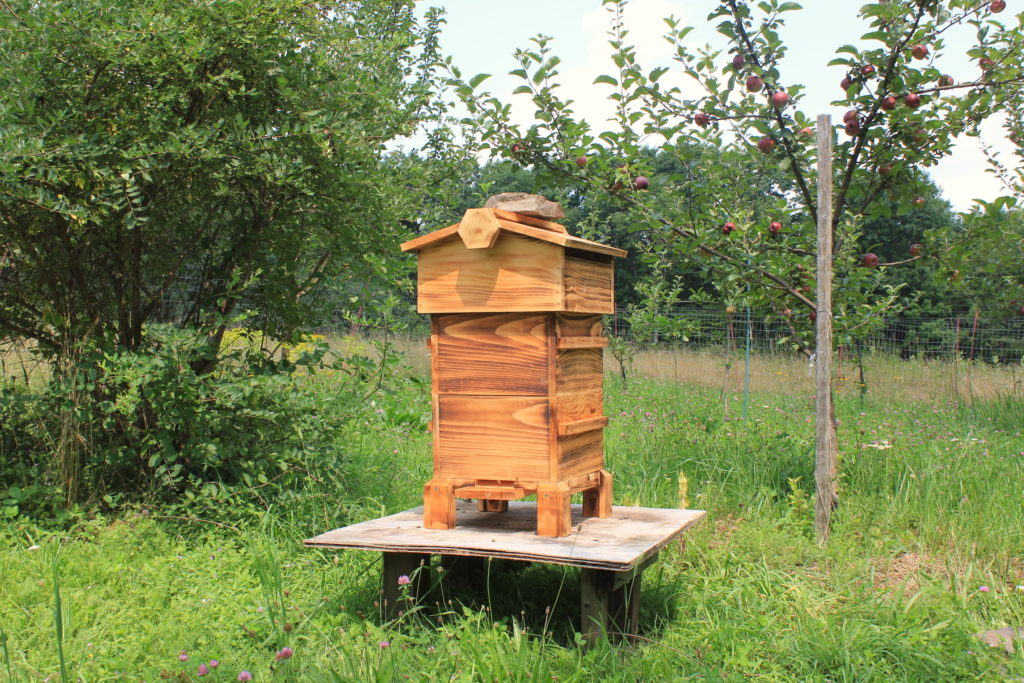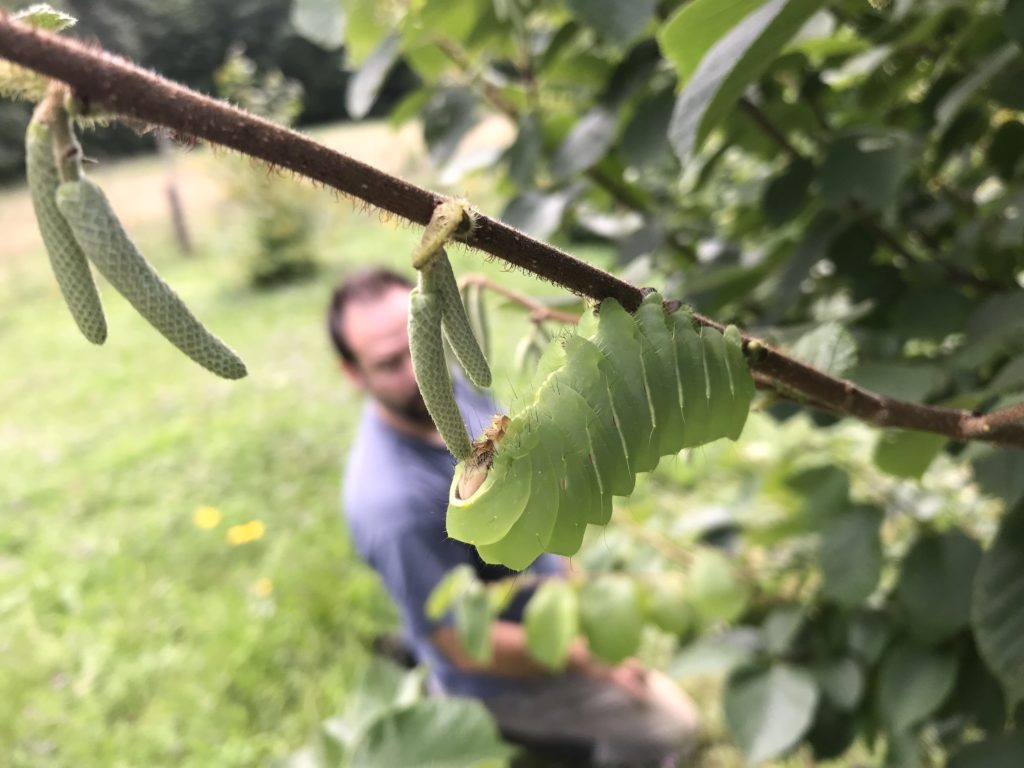55F at 9am with mist rolling back and forth from the valleys. A high of 64F and mostly overcast for the rest of the day with brief periods of sunshine.
Monthly Archives: September 2018
Fall Harvest: Squash Fries with Burnett Hot Sauce
The butternut squash came out more squashy than usual – much less like the soft, puddingy texture of sweet potato, more watery and stringy like spaghetti squash, a diluted version of the dense butternut from where the seeds originally came. A suggestion from Steve Burnett: cut it into fries, toss the fries liberally in Burnett’s legendary homemade hot sauce and roast for 40 minutes to make spicy squash fries. If you like a skin on your fries, finish them off under the broiler for a few minutes. Hot, spicy and delicious.
Daily Catskills: 09/29/18
Almost 60F by mid-morning with ominously low blanket of cloud that splits into a flotilla of long cotton balls by mid-afternoon. A high of 62F. The fall is slower this year with only vague swathes of red amidst the yellowing landscape.
Daily Catskills: 09/28/18
Daily Catskills: 09/27/18
Daily Catskills: 09/26/18
Another one of our many moody days. Showers in some areas, and the ubiquitous low-hanging clouds looking like the underside of a winter comforter. Long, steady breezes push through the trees and a high of 75F. More rain late afternoon. Rain, rain, rain. Cows in a huddle.
Fall Harvest Soup
What do you do when you have a basement full of potatoes, onions, garlic and apples? Add lentils to make a Fall Harvest Soup. You can easily make it vegan by not adding butter. You can also add bacon if you can’t live without meat, frying thin slices of your bacon in with the garlic.
This soup is a delicious mixture of the fruity apple with the nutty lentils. The potatoes thicken the soup, but you prefer the soup to be thinner, add more warm stock towards the end to reach the consistency you prefer. If you prefer the apples and lentils to be the main two flavors, only use three cups of potatoes, and add a half-cup of lentils. Continue reading
Daily Catskills: 09/22/18 Fall Equinox
Daily Catskills: 09/21/18
Five Catskills 35 Trail Hikes
There are 35 Catskills mountains over 3500 ft and there’s a club of volunteers devoted to maintaining these trails, and leading group hikes, called the Catskills 3500 Club. Two of the best extra resources are the Catskill Mountaineer website in which you can see a great deal of detail on each hike in the Catskills and a set of maps produced by the NYNJ Trail Conference. All the hikes are pretty strenuous, steep and miles long – not just your proverbial walk in the park. Furthermore, nine of the hikes are bushwhacks, which means there is no trail and you must rely on a map and compass. Some of the hikes are arrestingly beautiful, with waterfalls, lush vegetation and mountaintop lookouts that reward the hiker with stunning views that extend for hundreds of miles over the Catskills’ peaks. But don’t go unprepared. These hikes demand a high fitness level and expert advance planning, especially in winter. Novice hikers should not be attempting peaks in summer or winter without advice.
As an introduction to hiking, I hiked in the summer first and you never forget your first peak. Balsam Mountain in the summer is spectacular. Here are links to five reviews of the Catskills 35s: Continue reading
Daily Catskills: 09/19/18
Daily Catskills: 09/18/18
Daily Catskills: 09/17/18
Retrolinks Sunday: The Best of Upstate Dispatch
Upstate Dispatch recently celebrated its fourth birthday and I took a bit of a break to ponder on why and how it started in the first place. As a writer, I’ve always lived in deserted areas of cities with cheap rents: Shoreditch when it was a post-industrial wasteland on the other side of Liverpool Street train station – a two-pub pocket of London that was deserted at weekends where I learnt to play pool; Williamsburg when there were still cars burning on the streets of Kent Avenue: Bed-Stuy, when there was an actual car burning outside our studio one time and where a musician came every Sunday with a set of speakers and an electric guitar to play where nobody heard him; leafy Fort Greene when the rents were laughably low and one local dive bar in a basement that teemed with characters fit for novels, bursting with life. As I moved on from one city to another, and one area to the next, in the above order, the expanding population followed hard on my heels. Shoreditch is now a tourist mecca akin to Piccadilly Circus or Times Square.
The Catskills, where I now live, is also a sparsely populated area where there are so many characters fit for novels and brimming with life in a completely different way: rural, and wild-forested natural history. Farmers, artists, historians, writers, homesteaders, cooks, teachers and more, nestle in the valleys of the Catskills and perch on mountaintops. Our forested ridge is fast filling up with young people seeking a more calming environment, good food and company. In the time since we bought our house, an astonishing eleven years ago, our dog has had the run of a 40-acre ridge-top and we only had two friendly full-time neighbors, a retired couple. All that is changing – our dead-end road is filling up with young, curious people and for the first time last night, as I read by an open window, I heard music coming from another distant house that mingled with owls, evening chirping and the waning laughter of crows.
New York City is charging out of its concrete jungle, sending out its long, withered, under-nourished tendrils towards us – the only vegetation that it can muster – gasping for life and some nurturing soil. This slow march from the city to the country is viewed with consternation by some, but if you’ve had children, you can’t really complain about the fast-swelling population.
Upstate Dispatch was started as a Catskills diary, a daily documentation of life in the Catskills and latterly my experiences as a writer in the past four years in local print and on my radio show on the eclectic WIOX Radio.
There is a so much to read on this site. Here are some more links to the best of Upstate Dispatch:
Our hiking page has been the most popular. Find our efforts to climb the Catskills 35 and document some of the best views in the Catskills over the years.
Every day, for the first 18 months of the website, I published one picture a day from around the area in the Daily Catskills section. Click here to scroll back through the years in this category.
More on my personal history in First Person Dispatch.
Conversations with other Catskills residents in Catskills Conversations.
Our adventures with our small farm and a steep learning curve in the world of foraging.
Now, back to documenting this year’s slow fall. The mountains look like those heads of broccoli that you leave in the fridge too long: slightly yellowing, “on the turn” as they say in England.
Thanks for reading.
J.N. Urbanski 9/11/18
Daily Catskills: 09/09/18
Daily Catskills: 09/08/18
Daily Catskills: 09/07/18
Daily Catskills: 09/06/18
80F by noon and breezeless, but cooler in the forest. A humid 84F high broken by heavy clouds, mid-afternoon showers, lightning and a long thunderstorm that dumps a mass of evening mist that rolls in and out of the valleys at dusk like a tide. Then a power cut at 8.30pm for absolutely no reason at all.
Daily Catskills: 09/05/18
Eat Your Weeds: Purslane
Most of the weeds that are considered a blight on the lawn are edible, including purslane. One of the tastiest and power packed with nutrients, purslane is quite distinctive from other weeds because it’s a succulent so when you bite into it there will be a crunch and some juice that tastes like a mix of lemon, cucumber, and a dash of pepper that’s much milder than arugula. The juice contains pectin, so it also makes a good thickener instead of flour for gluten-free cooking like soups and stews, but really it’s good for every meal.
Purslane is said to have more Vitamin E than spinach and more beta carotene than carrots. Allegedly, It’s also a rich source of Omega-3 fatty acids. It goes nicely raw in salads, or cooked well in soups. If you put it in a soup, cut off the red stems as they are a tad bitter. Leave the red stems on if you’re putting it in a stew.
Like spinach, a widely cultivated and popular vegetable, purslane is on the FDA poisonous plant list. Like spinach, purslane is high in oxalates but so are beet greens, lamb’s quarter, rhubarb and Swiss chard – also very popular vegetables. This is something to be considered before you eat it. The FDA states that these vegetables interfere with calcium absorption in the diet in certain amounts. Oxalates are present in most foods, even fruit and nuts, and are virtually unavoidable, but high levels in the body could lead to kidney stones or other ailments.
However, despite this it is becoming so popular that farmers are now selling it at markets and because it takes little to no cultivation or effort, naturally appearing on the understory or in empty beds for two months between summer and fall, it’s a vegetable with a high profit margin. If you buy purslane, you’re helping a farmer. And of course, if you have a garden and find it carpeting your raised beds, it’s free for a couple of months out of the year. If you don’t want to eat it, use it like a nutritious cover crop to restore your soil and turn it over in the raised bed like farmers do with clover. Just don’t spray weedkiller on it.
Daily Catskills: 09/03/18
A humid morning with the ubiquitous Catskills mist evaporating off the mountains. A high of 90F with multifarious clouds, a gentle breeze and hot in the sun. A milk glass sky at dusk with cerulean brush strokes like someone painted them on. A sultry Labor Day.
Wild Plant Teas: Goldenrod
Goldenrod is a perennial that grows mostly in direct sunlight, although you can find them in partial sunlight by roadsides. You’ll usually find them in fields and on hillsides and, as the name suggests, they are tall rods (or stems) getting about two to six feet high with loose, floppy clusters of tiny, yellow flowers at the top of the stem that droop over slightly. Thin leaves, two to six inches long, grow all the way down the stem alternately, and are hairy.
We have Goldenrod in abundance – whole fields of it – so taking a few blossoms for tea is sustainable. It’s best harvested in late summer when the flowers are opening. Clip off the yellow blossoms including two or three inches of the stem. Steep three of these fresh blossoms in a cup of hot water to make a delicious fresh tea that tastes similar to a strong green tea. Sweeten with a dash of maple syrup. Don’t pour boiling water over them. Let the water cool down a little first because you don’t want to burn the flowers.
Goldenrod is said to have a number of health benefits. It soothes a sore throat, reduces pain and inflammation. It is also used for gout, joint pain (rheumatism), arthritis, as well as eczema and other skin conditions.
The flowers don’t freeze well, so if you want to save some tea for winter, make a condensed batch and freeze to dilute later with water. To make a condensed batch of tea, simply soak as much fresh goldenrod as you can fit in a mason jar of hot water. Strain through a sieve and freeze.
Daily Catskills: 09/02/18
Bee Update: The Warre Hive
Six weeks ago, we caught a swarm that was attached to a tree close to our first hive and transferred them to a new, temporary hive. A few days later, we moved them to this new Warre hive (pictured above) – a top bar hive – that comes with viewing windows at the back, so you can see what’s going on the hive without pulling out the frames (pictured bottom).
It’s not clear whether the swarm on the tree was a group of our own agitated bees in the first hive that had been robbed several times. It’s possible that they made a new queen and split. However, six weeks later, this new colony in the Warre hive is very calm, unlike the bees in our first hive, the occupants of which are occasionally defensive. (This can only be an advantage when a hungry bear comes to collect the honey later on in the year. A bear has already come within sniffing distance of the hive – he left evidence of his visit – but departed without trying to take anything despite the heady aroma of honey around the hive. The bees are docile when they’re foraging – now the Goldenrod is out – but are always prepared for another invasion. This trait may cycle out with each new wave of brood.) Continue reading
